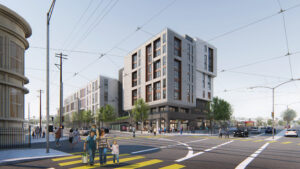In 2019, the San Francisco Board of Supervisors (BOS) voted to close the San Francisco Juvenile Justice Center by 2021, making San Francisco the first major urban jurisdiction to plan to abolish juvenile incarceration.
The decision passed easily with ten of the eleven supervisors supporting the move, which was made in response to the cost, efficacy and morality of detaining San Francisco youth in conditions comparable to a county jail. The BOS promised to keep offenders deemed a danger to society in a “homelike” environment and gave assurance that the rest would be placed in alternative rehabilitative programs.
Following the decision, District 9 Supervisor Hillary Ronen said to YR Media,“State law requires kids who commit certain crimes or who are a danger to themselves or who create a public safety risk to be in a detained setting…We will have an alternative setting that is 100 percent secure. (These facilities) will feel more like a rehabilitation center or boarding school, than like a jail. And the interaction that youth will receive will be loving, supportive, based on mental health intervention, based on dealing with the trauma that these youth have suffered in their young life.”
Despite the clear enthusiasm surrounding the closure of the Justice Center, the SF local government has yet to take the necessary steps to make its two-year-old promise a reality.
The SF Juvenile Justice Center and the facility’s current conditions are far from the “homelike environment” that the BOS promised. The Juvenile Justice Center was designed identically to SF County Jail despite arguable differences between the needs of children and the needs of adults. The youngest inmate in the hall was detained when he was just 11 years old.
The cells where inmates sleep are dimly lit by fluorescent light that stays turned on at all hours — day and night — and have tiny clouded windows near the ceiling. The cells are small: about the size of a large bathroom stall. The beds are concrete and low to the ground; the only thing between the sleeping inmates and the concrete is a thin foam mattress. Inmates are in their cells from 8:30 pm until the morning and are checked on every fifteen minutes. The concrete walls — which are etched with names and drawings from inmates — are all painted white.
The most “homelike” part of the detention center is the Merit Center, where only the well-behaved inmates are allowed to go about twice a week. The Merit Center is painted bright orange and blue and has video games, a ping-pong table, couches and a small kitchen.
Aside from the Merit Center, every room in the detention center is painted white or beige, has exposed linoleum floors and only gets natural light through small windows close to the ceiling — many of the classrooms in the detention center have no natural light at all.
Margaret Brodkin, who serves on the San Francisco Juvenile Probation Commission has been involved in juvenile justice-related issues since 1978. Brodkin has spent 25 hours with juvenile inmates in order to better understand the experience of incarcerated youth.
She said, “If you didn’t obey the rules, you went to your room. When you were sleeping, there was a man looking in your room — actually, your cell. ‘Cell’ is the appropriate term. It’s cinderblock. You sleep on cement. It’s uncomfortable and cold.”
In addition to concerns around the morality of incarcerating youth in these conditions, SF Juvenile Detention Center puts a financial strain on the city that critics deem to be excessive. Jill Tucker of the SF Chronicle reported that it costs the city $3,000 per inmate per day — or $1.1 million per year — to house a single inmate. To put that number in perspective, the SF United School District spends about 200 times less annually per public school student.
While the city of San Francisco is paying millions of dollars annually to maintain this hall that was designed to detain hundreds, there are only 18 juveniles detained as of late November.
The Juvenile Justice Center Director described the demographics of the detained youth and explained that a significant portion of the children and young adults currently in the detention center are repeat offenders. Additionally, many have less than two parents and an unstable home life. The majority of the youth qualify for Medi-Cal and many have parents that are also in the criminal justice system. Proponents of rehabilitative justice systems argue that if children commit crimes due to a disadvantaged background, the solution is to provide them with the care that they have been deprived of.
With less than a month left until the 2021 deadline, questions arise around if the supervisor’s promise to close the Juvenile Justice Center will be kept. Shamann Walton, who currently serves as the president of the San Francisco BOS, explained that the pandemic gave the city a whole host of urgent and unprecedented challenges that needed to be addressed immediately.
Walton said, “We had to shift some of our priorities to make sure that we were taking care of folks who were suffering from food insecurity, protecting people from evictions and fighting for higher wages for our frontline workers.” As a result, the reimagined justice center was put on the back burner.
Chances are slim to none that a plan will be put into effect by the end of this year, and the eyes of activists, policymakers and system-impacted youth are on the San Francisco Board of Supervisors as the deadline they set over two years ago rapidly approaches.







